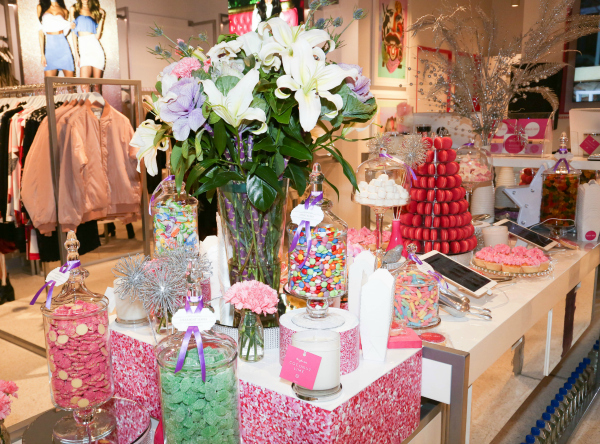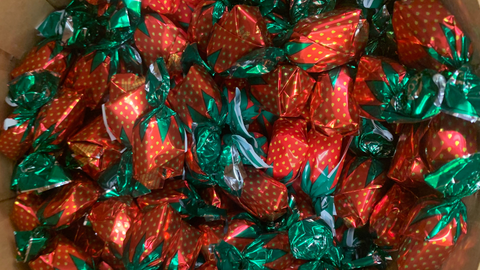All About I Luv Candi
You can also estimate your very own revenue by using various presumptions with our economic strategy for a candy shop. Average regular monthly revenue: $2,000 This type of candy shop is frequently a small, family-run service, possibly recognized to citizens however not attracting large numbers of tourists or passersby. The store may provide a selection of usual sweets and a few homemade treats.
The shop does not typically bring rare or pricey things, concentrating rather on economical treats in order to preserve normal sales. Presuming an average investing of $5 per customer and around 400 customers monthly, the regular monthly profits for this sweet-shop would certainly be roughly. Typical month-to-month income: $20,000 This sweet-shop take advantage of its critical area in a busy urban location, drawing in a huge number of consumers searching for sweet extravagances as they go shopping.

In enhancement to its diverse candy selection, this shop might also market relevant items like gift baskets, candy bouquets, and novelty things, giving numerous income streams. The shop's place needs a higher budget for rent and staffing however causes greater sales quantity. With an approximated average investing of $10 per customer and concerning 2,000 consumers each month, this store can create.
Fascination About I Luv Candi
Found in a major city and traveler destination, it's a big establishment, typically spread out over multiple floors and perhaps part of a nationwide or global chain. The shop supplies an enormous range of sweets, including special and limited-edition products, and goods like branded clothing and devices. It's not just a shop; it's a location.
These destinations help to draw thousands of visitors, dramatically boosting prospective sales. The operational costs for this type of shop are significant due to the place, dimension, personnel, and features offered. Nonetheless, the high foot traffic and ordinary costs can lead to substantial revenue. Presuming a typical acquisition of $20 per consumer and around 2,500 clients monthly, this flagship store can accomplish.
Classification Examples of Expenditures Typical Regular Monthly Cost (Range in $) Tips to Reduce Costs Rental Fee and Utilities Shop lease, electrical energy, water, gas $1,500 - $3,500 Take into consideration a smaller sized location, work out rent, and make use of energy-efficient lights and devices. Stock Candy, snacks, packaging products $2,000 - $5,000 Optimize stock administration to minimize waste and track prominent products to stay clear of overstocking.
I Luv Candi Fundamentals Explained
Advertising And Marketing Printed matter, on the internet ads, promos $500 - $1,500 Concentrate on cost-effective electronic marketing and utilize social media sites platforms for complimentary promotion. Insurance Service liability insurance coverage $100 - $300 Look around for affordable insurance coverage prices and think about packing policies. Equipment and Maintenance Money registers, display racks, repair work $200 - $600 Buy pre-owned tools when feasible and carry out routine maintenance to prolong tools life-span.

This indicates that the candy store has actually reached a factor where it covers all its taken care of costs and starts producing earnings, we call it the breakeven factor. Take into consideration an instance of a sweet store where the monthly set costs normally amount to around $10,000. A harsh quote for the breakeven point of a sweet store, would after that be about (given that it's the complete fixed expense to cover), or offering in between with a price variety of $2 to $3.33 per system.
The Ultimate Guide To I Luv Candi
A huge, well-located candy shop would clearly have a higher breakeven factor than a small shop that does not require much profits to cover their expenditures. Interested about the profitability of your candy store? Try our straightforward economic plan crafted for candy stores. Merely input your own assumptions, and it will assist you compute the amount you require to gain in order to run a successful business - da bomb.
One more danger is competitors from other candy shops or bigger stores that might offer a wider selection of items at lower costs (https://www.wattpad.com/user/iluvcandiau). Seasonal changes sought after, like a decline in sales after holidays, can likewise influence profitability. Additionally, changing customer preferences for healthier treats or nutritional restrictions can lower the appeal of traditional sweets
Last but not least, financial recessions that minimize customer spending can impact sweet store sales and productivity, making it vital for sweet-shop to manage their expenditures and adapt to changing market problems to stay rewarding. These dangers are frequently included in the SWOT analysis for a sweet store. Gross margins and web margins are essential indications used to gauge the productivity of a sweet-shop business.
I Luv Candi Fundamentals Explained
Essentially, it's the revenue remaining after deducting costs straight pertaining to the candy inventory, such as purchase expenses from distributors, production prices (if the candies are homemade), and staff salaries for those included in manufacturing or sales. https://www.flickr.com/people/200368981@N06/. Web margin, alternatively, consider all the costs the sweet shop sustains, including indirect prices like administrative expenses, advertising and marketing, rent, and taxes
Candy stores usually have a typical gross margin.For circumstances, if your sweet shop gains $15,000 monthly, your gross revenue would certainly be approximately 60% x $15,000 = $9,000. Let's highlight this with have a peek at this website an example. Think about a candy shop that offered 1,000 candy bars, with each bar valued at $2, making the overall earnings $2,000 - da bomb australia. Nonetheless, the shop sustains prices such as buying the sweets, energies, and salaries available personnel.
Comments on “Unknown Facts About I Luv Candi”